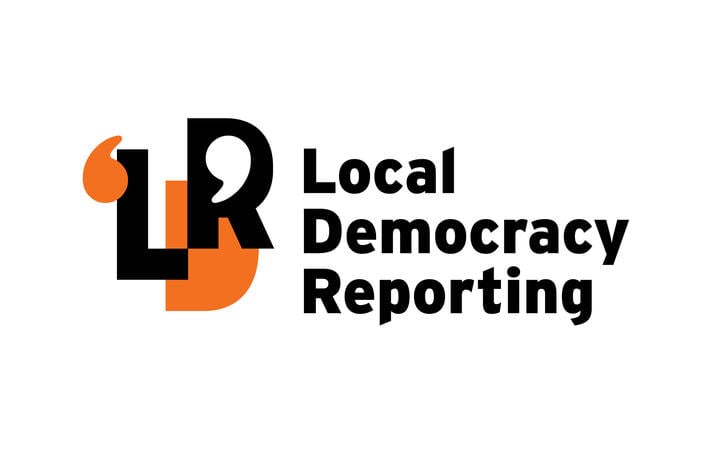Two invasive pests are on the Bay of Plenty’s doorstep.
But councils, the Government and iwi are working to keep the exotic caulerpa seaweed and the freshwater gold clam at bay.
Caulerpa was first found on Aotea/Great Barrier Island in the Hauraki Gulf in July 2021.
It has since been found at multiple locations around the top of the North Island and is now in the Coromandel at Great Mercury Island.
New Zealand has native caulerpa, but fast-growing exotic caulerpa brachypus and parvifolia species form dense mats that smother native seafloor habitats, displace indigenous flora and fauna, and alter ecosystem dynamics.

Its spread has emerged as one of the country’s most pressing marine biosecurity threats, a July report by Earth Sciences New Zealand said.
Bay of Plenty Regional Council biosecurity officer Te Wakaunua Te Kurapa said nothing was stopping caulerpa from spreading because it could move on ocean tides and currents.
Boating activity could also spread it, as pieces could catch on anchors or get stuck on fishing or diving gear.
Boaties should remove any kind of seaweed from their anchors, chains or gear, bag it and bin it back on shore.
The council regularly monitored high-risk sites and high-value conservation areas, he said.Year-round monitoring is carried out in Tauranga Harbour and six islands, including Karewa, Mōtītī, Rabbit Island/Motuotau and Leisure Island/Moturiki.
The Astrolabe/Ōtāiti and Okaparu reefs are also surveyed.

MPI Biosecurity New Zealand director of pest management John Walsh said the ministry partnered with all upper North Island regional councils to educate people on how to prevent the spread of caulerpa.
This included paid campaigns, signs and leaflets at marinas, boating clubs and boat ramps, and ambassadors providing information at boating sites.
Areas where caulerpa was present were classified as yellow or red controlled.There were controlled area notices for Aotea/Great Barrier Island, Waiheke Island, Hauturu/Little Barrier Island, Ahuahu/Great Mercury Island and Te Rāwhiti Inlet in the Bay of Islands.
Walsh said the areas were classified based on previous caulerpa presence and density, the cultural, economic and amenity value of affected areas and volume of vessel traffic.
“The controls are risk-based, taking into account both the likelihood of caulerpa spread and the impact on affected communities.”
Yellow areas had previous caulerpa infestation or were high risk, and the risk of spread on vessels and equipment could be managed by checking and cleaning gear.

The red areas reflect a high risk of spread and stricter controls.
There was no current figure for how much of the upper North Island seabed was covered by the weed, Walsh said.
As of August 2024, 1500ha were affected, but Earth Sciences NZ research has since shown large reductions in cover at some sites where it was previously abundant.
“While these reductions are notable, we don’t know if it’s a one-off event, whether exotic caulerpa will return, or if we’re seeing a more permanent reduction.”
More than $20 million has been spent or allocated to research, surveillance, development and testing of removal and minimisation techniques, communications and legal controls.
Keeping the clams at bay
A strong stance from Rotorua iwi has helped keep the district’s 14 lakes free from the fast-growing gold clam.

Freshwater gold clam, or corbicula fluminea, was found in the Waikato River in May 2023, multiplying to cover a 200km stretch from Lake Maraetai to Port Waikato.
It was spread to other waterways only by human activity, so it was easier to control, Te Kurapa said.
A single clam, often smaller than a $2 coin, can produce 600 clams a day and up to 70,000 juveniles every year.
The clams were quick producers and, if they entered a lake, they could smother native molluscs and aquatic plants, Te Kurapa said.
Ngāti Tarāwhai Iwi Trust took a controversial stance days before trout fishing season opened in 2023 and closed Lake Ōkataina.
The lake reopened after six weeks, since when all boats must be cleaned before entering.
In March, an automated gate arm was installed at its boat ramp, allowing access only to those with a code obtained by cleaning their boat at a wash station.
Trust chairman Cyrus Hingston said the only reason the iwi could put tight restrictions on the lake was because it had one entry and exit point.

He said 95% of lake users were happy to follow the protocols.
Their efforts to stop the clams had also reduced the impact of other pests such as catfish and lake weed, and enabled native species to thrive.
Ōkataina had become an example of biodiversity protection and attracted interest from scientists, researchers and other groups wanting to protect their lakes, Hingston said.
A controlled area notice applies at all 14 Te Arawa lakes.
Boats that have been in the Waikato River in the past 30 days need to be cleaned at a designated wash station before entering the lakes, in addition to the normal “Check Clean Dry” requirements.
Ambassadors will be at key locations this summer, engaging with water users to promote the Check, Clean, Dry message and raise awareness about corbicula and other pests and weeds.
Earth Sciences NZ – created by the merger of GNS Science and Niwa in July – received $10.2m last year to eradicate the clams.
– LDR is local body journalism co-funded by RNZ and NZ On Air.




